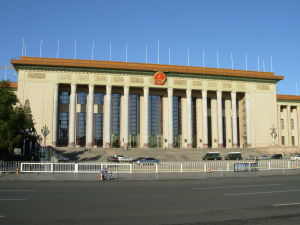
Provisions on Environmental Administration of New Chemical Substance (MEP Order 7) were officially implemented on 15 Oct. 2010. Enterprises attached great importance to this Provision and began to apply for new chemical substance notification since then. By the end of 2017, 654 typical notification certificates have been issued and announced to the public. However, among all the typical notifications, the 4th level notification (over 1000 tonnes per year) only accounts for less than 5% of them.
In accordance with the analysis of technical team in CIRS, most of the enterprises decide against applying for 4th level notification, because:
1. Low market demand; and
2. The data expenses and risks of 4th level notification are much higher than other tonnage band.
How can enterprises set reasonable notification solutions? How can enterprises successfully complete the 4th level notification within a controllable cycle and cost? What kind of information recorded in the notification solution shall be paid particular attention to? In order to help enterprises complete 4th level notification, CIRS is willing to share the following information:
1. Sufficiently evaluate the market prospect and gradually increase the notification tonnage
Generally, the demand for a new substance will gradually increase within a certain period of time after the new substance is put on the market. Relevant enterprises need to sufficiently evaluate the market demand for the substances they plan to manufacture or import at first. Then, they also need to evaluate the expansion of demand for new substances at different times and set a timeline. In this way, enterprises can apply for new chemical substance notification of different levels based on the time line. They can complete the low volume notification at first and gradually increase the notification volume.
2. Adopt non-test data
Compared with the data requirements of 3rd level notification (100-1000 tonnes per year), the data requirements of the 4th level notification are higher. 4th level notification requires carcinogenic data and chronic toxicity data. Even if the combined testing (OECD TG453) are carried out in domestic, it will take over 3 years to complete all the tests. Besides, enterprises will also spend more than 2 million Yuan on this. For this reason, if the carcinogenicity and chronic toxicity of substances can be evaluated through scientific approaches and then be approved by the evaluation experts, there is no doubt that the test cycle can be shortened and the cost will be saved.
To carry out the carcinogenicity and chronic toxicity evaluation, enterprises must pay particular attention to the following aspects:
1. The structure and usage of the substances, for instance, whether the substances has the potential to cause cancer or mutation and whether the substances will lead to frequent or long-term exposure;
2. Comprehensive analysis of the toxicity information of the substance, including acute&repeated toxicity data, mutagenic data and toxicokinetics data; and cross-reference the existing documents and analogues, to judge if the new substance has the potential to cause mutation and cancer;
3. Evaluation of the exposure status during manufacturing and usage of the new substance, for instance, are there any measures to control the risks of exposure to workers and consumers; and
4. Invitation of experts in the fields of health toxicology and occupational health to comprehensively evaluate the above information and reach a conclusion.
3. Strictly control the risks to people’s health and the environment
Risk evaluation report is key to typical notification of new chemical substance. The results of the risk evaluation will decide whether the notifier can take effective risk management measures to control the health and environmental risks of the substances. Since the volume of the 4th level notification is large, substances are more likely to be exposed to humans and the environment. How can enterprises pass the risk evaluations for 4th level notification?
At first, notifier needs to know the detailed information of the new substance, including the manufacturing status, its usage, storage and transportation and set reasonable exposure scenarios based on the actual situations. Detailed information, including the major equations, technological process, material balance as well as the emission and disposal of the three industrial wastes, are also needed. Besides, when qualitatively evaluate the exposure risks to health, the scores for exposure factors shall be appropriate. At last, when quantitatively evaluate the exposure risks to the environment, characteristics of the substances, the manufacturing and usage technology as well as the disposal of three industrial wastes shall be taken into consideration. The parameter shall be set appropriately. With the increase of the notification volume, the exposure risks will become higher. As a result, it is necessary to carry out strict and effective risk control measures.
So far, CIRS has shared the key points for 4th level New Chemical Substance Notification in China. If you have any questions, please contact us via service@cirs-group.com.
